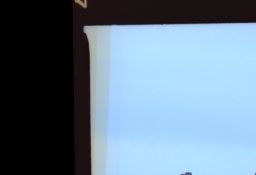Bleaching can be done following development with a stop bath and rinse, in room light. You will notice within a minute of putting in the bleach that the film begins to become opaque, either a light blue, tan, or yellow depending on the brand and film type (C-41 or E-6). If you process in SS tanks as you likely do for B&W, a lifting rod makes it easy to pull up the reel for inspection. Temperature isn't particularly critical for bleach and fix, although you want to be within a few degrees of 100F to avoid thermal shock to the gelatin.
By about half the specified bleach time the film will appear opaque across its width. Bleaching begins first around sprocket holes and the film edges where the emulsion is cut and solution penetrates more quickly. If the action doesn't appear complete by about half the specified bleach time, then your solution is nearing the end of its capacity and you need to extend the time to be sure the processing completes. Within reason you cannot overbleach; both bleach and fix process to completion, bleach converting all developed silver to halide and fixer dissolving the halide. Unexposed halide is unaffected by bleaching; it gets removed in the fixer. The only difference between C-41 and E-6 is that in reversal processing development is stopped and then reversed by re-exposing or chemically fogging the unexposed halide. In general E-6 film is more difficult to bleach than C-41 negative films, and the formulation of the bleach and fixer requires a bit more care to set pH properly in order not to adversely affect the color dyes. Slight color shifts in C-41 are less noticeable because you make corrections in printing anyway.
Fixing works the same way, with the same observation for solution capacity. A good rinse in between bleach and fix extends the fixer lifetime considerably and minimizes the possiblity of staining. If you use a blix both actions proceed simultaneously. It's therefore not as easy to distinguish the level of activity. In any case, blix never lasts as long as do separate solutions. After fixing the clearing effect is obvious and you can easily distinguish that negatives have cleared orange masking in unexposed areas.
Companies market kits with blix because they want to advertise the shortest processing time, they reduce their cost to package and ship components, and maybe to lower their cost or to encourage customers to buy new chemistry; when the blix is gone the kit is more or less useless and has to be replaced. PE is the resident bleach expert so he might wish to elaborate on what I post here....











